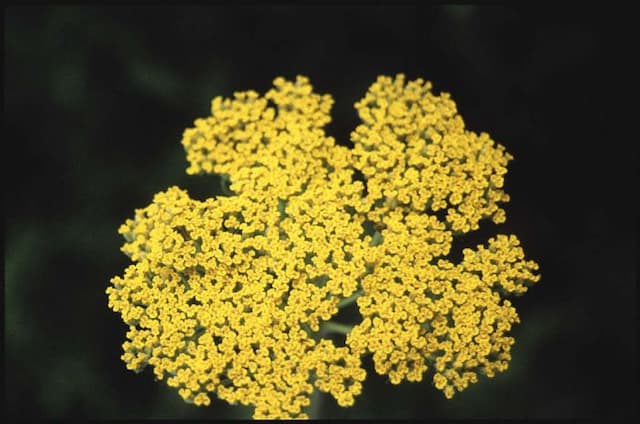Cosmea Sonata Series Cosmos bipinnatus Sonata Series

ABOUT
Sonata Series are compact annuals to 30cm, with finely dissected leaves and single, daisy-like flower-heads 8cm across, in shades of red, pink and white with yellow centre
About this plant
 Names
NamesSynonyms
Mexican Aster, Garden Cosmos, Sonata Cosmos
Common names
Cosmos bipinnatus Sonata Series.
 Characteristics
CharacteristicsLife cycle
Annuals
Foliage type
Deciduous
Color of leaves
Green
Flower color
Varies
Height
1-2 feet (30-60 cm)
Spread
1-2 feet (30-60 cm)
Plant type
Herb
Hardiness zones
9
Native area
Mexico
Benefits
 General Benefits
General Benefits- Easy to grow: Cosmos bipinnatus, commonly known as Mexican Aster, is a low-maintenance plant that can thrive even in neglectful conditions.
- Attracts pollinators: Mexican Aster is known for attracting bees, butterflies, and other beneficial insects to the garden, aiding in pollination.
- Extended blooming period: This plant has a long flowering season from early summer until fall, providing continuous color to the landscape.
- Drought tolerant: Once established, it is quite drought-resistant, making it suitable for xeriscaping and water-wise gardens.
- Cut flower use: The blossoms of the Mexican Aster make excellent cut flowers, with long stems and vibrant colors that hold well in vases.
- Easy to seed: It readily self-seeds, ensuring a continuous display year after year with minimal effort.
- Color variety: The Sonata Series is available in a range of colors, which allows for a vibrant and diverse garden design.
- Enhances biodiversity: By attracting various pollinators, it contributes to the ecological health of the garden.
- Deer resistant: It is not a preferred plant of deer, reducing the likelihood of damage in areas with deer populations.
- Non-invasive: Mexican Aster tends to stay where it's planted and doesn't crowd out other plants, making it an excellent choice for mixed beds and borders.
 Medical Properties
Medical PropertiesThis plant is not used for medical purposes.
 Air-purifying Qualities
Air-purifying QualitiesThis plant is not specifically known for air purifying qualities.
 Other Uses
Other Uses- Dye source: The petals of the Cosmos plant can be used to create a natural dye for fabric, offering a range of pink, orange, and maroon hues depending on the mordant used.
- Bookmark creation: Pressed flowers from the Cosmos plant can be laminated or embedded into handmade paper to create unique bookmarks.
- Edible decoration: Cosmos flowers are edible and can be used as a colorful garnish on salads, desserts, and drinks.
- Photography subject: Cosmos flowers, due to their vivid colors and symmetrical form, are often used as subjects in macro and nature photography.
- Education: The plant can be used in educational settings such as schools or botanical gardens to teach about pollination and the importance of native flora for insect biodiversity.
- Art supplies: Petals and leaves can be used in art projects, like eco-printing on fabric or paper, to create natural patterns and shapes.
- Companion planting: Gardening enthusiasts plant Cosmos to attract beneficial insects that help control pests in vegetable gardens or on farms.
- Floral arrangements: Cosmos stems have a long vase life and are popular choices for fresh bouquets and floral decorations at events.
- Bird attraction: Once the flowering is done, the plant's seeds attract birds such as finches, who feed on them in the garden.
- Craft ingredient: Dried Cosmos flowers can be used in homemade potpourri mixes to add color and a subtle fragrance.
Interesting Facts
 Feng Shui
Feng ShuiThe Cosmos is not used in Feng Shui practice.
 Zodiac Sign Compitability
Zodiac Sign CompitabilityThe Cosmos is not used in astrology practice.
 Plant Symbolism
Plant Symbolism- Balance and Symmetry: The evenly placed petals of the Cosmos flower represent a balanced universe and harmony in nature.
- Beauty and Love: Cosmos are often associated with the ideal of love and beauty, owing to their delicate appearance and vibrant colors.
- Modesty: Despite their striking appearance, Cosmos maintain a sort of simple elegance that can symbolize modesty.
- Peace and Tranquility: The Cosmos flower is known to evoke a sense of calm and serenity, perhaps due to its gentle sway on a breezy day.
- Wholeness and Connectivity: The radial symmetry of the Cosmos speaks to a larger sense of wholeness and the interconnectedness of life within the universe.
- Freedom: Cosmos flowers are known for their tendency to grow freely and somewhat wildly, symbolizing independence and a free spirit.
- Order and Harmony in Life: Reflecting the orderliness of the Cosmos in the universe, this flower represents the desire for peace and harmony in one's life.
 Water
WaterCosmos, commonly known as the Garden Cosmos, requires regular watering, especially during dry spells. To keep the soil consistently moist, water the plant deeply once a week with about 1-2 gallons of water, depending on soil conditions and climate. Avoid overhead watering to prevent foliage diseases; instead, apply water directly to the base of the plant. During periods of extreme heat or prolonged drought, you may need to water twice a week. Be cautious not to overwater, as the Garden Cosmos tolerates moderate drought and too much moisture can lead to root rot.
 Light
LightGarden Cosmos thrives in full sun conditions, so it should be planted in a spot where it receives at least 6-8 hours of direct sunlight daily. They perform best with ample sunshine, as this encourages abundant flowering. If planted in too much shade, the plants will become leggy and produce fewer blooms.
 Temperature
TemperatureGarden Cosmos is heat-loving and prefers temperatures between 70°F and 85°F for optimal growth. The plant can survive minimum temperatures down to around 32°F but is sensitive to frost. The maximum temperature for the Garden Cosmos can go well above 90°F; however, extremely high temperatures might cause the plant to wilt, requiring additional water to help it recover.
 Pruning
PruningPruning Garden Cosmos is primarily done to encourage further blooming and maintain a tidy appearance. Deadhead spent flowers regularly to promote continuous blooming throughout the season. Lightly prune the plant by cutting back one-third of its height mid-season to rejuvenate foliage and support new growth. The best time for major pruning is late winter or early spring, before the onset of new growth.
 Cleaning
CleaningAs needed
 Soil
SoilThe best soil mix for Cosmos, commonly known as the Garden Cosmos or Mexican Aster, is well-draining and moderately fertile with a pH ranging from slightly acidic to neutral, around 6.0 to 7.0. A mix of loam, peat, and sand in equal parts can provide the right balance for healthy growth.
 Repotting
RepottingGarden Cosmos typically do not require frequent repotting as they are annual plants. They are usually sown directly in the garden or container where they will bloom and do not survive beyond one growing season.
 Humidity & Misting
Humidity & MistingGarden Cosmos are not particularly humidity-sensitive and thrive in average outdoor humidity levels. They perform well in both humid and dry conditions, as long as their soil and watering needs are met appropriately.
 Suitable locations
Suitable locationsIndoor
Place Garden Cosmos near a sunny window in well-draining soil.
Outdoor
Sow in sunny spot after frost; mix sand for drainage.
Hardiness zone
2-11 USDA.
 Life cycle
Life cycleThe Cosmos, specifically the Cosmos bipinnatus Sonata Series, begins its life as a seed, which, when planted in well-drained, fertile soil and given appropriate warmth and moisture, will germinate. Upon germination, seedlings emerge, typically within 7 to 14 days, quickly developing their characteristic feathery foliage. As the plant matures, it develops a strong stem and foliage, entering the vegetative stage. It reaches the flowering stage in midsummer, producing vibrant daisy-like flowers with a yellow center and various colors, such as pink, white, or red petals, attracting pollinators like bees and butterflies. After pollination, the flowers produce seed heads that mature and dry, eventually releasing seeds. The plant completes its annual cycle by dying off with the onset of frost or in regions with prolonged warmth, it may behave as a short-lived perennial.
 Propogation
PropogationPropogation time
Spring to early summer
Propogation: Cosmos, specifically the Cosmos bipinnatus Sonata Series, is typically propagated through seeds, as this method is the most popular and straightforward. To propagate cosmos by seeds, they are usually sown directly into the garden after the danger of frost has passed, which is often in late spring. Seeds should be scattered lightly onto prepared soil that has been loosened and raked to a fine texture and then gently pressed into the soil to ensure good contact; however, they should not be covered deeply, as cosmos seeds need light to germinate. Watering should be done with a fine spray to avoid displacing the seeds. Under the right conditions, notably warm soil and plenty of sunlight, seeds will germinate within 7 to 14 days. Once the seedlings have developed their first set of true leaves and are sturdy enough, thinning is recommended, spacing them roughly 12 to 18 inches (30 to 45 centimeters) apart to allow for sufficient room for growth.









